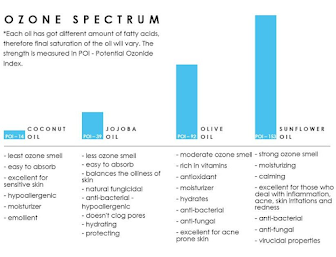Uses for Ozone Oil
Ozone oil is created by bubbling ozone gas through sunflower oil until the sunflower oil has reached a saturation point. The amount of time required to produce this varies according to the ozone output of the generator being used. The amount of ozone gas held in the oil depends on the type of oil used.
Ozone oil is stored in a light blocking glass container for longevity of the product. Ozone oil will break down natural rubber products, so it is important to avoid contact with rubber or the rubber eventually disintegrates. Silicon caps, tubing, and droppers will have greater longevity. The oil will also affect fabrics which will retain the ozone oil odor, even through washings. It is possible for ozone oil to damage fabrics, so take care in the application of the oil.Here are a few uses:
- dip Q-tip/cotton swab in oil and coat the inside of each nostril.
- lightly dip the Q-tip/swab in oil and apply to the ear.
- place two or three drops on the toothbrush and brush for 2 minutes. Add toothpaste to improve taste.
- dab the oil on fingers and spread around skin for 5 minutes, releasing ozone into the skin. Remove with another cleansing oil like avocado or olive oil - this loosens the thick ozone oil from the skin.
- dab the oil on bug bites to reduce the itch or pain.
- dab the oil on acne spots.
- place a few drops under infected nails and massage in. Continue for several months in difficult cases. It also helps to dry the affected skin thoroughly with a hair dryer after bathing, and before applying ozone oil.
- soften dry skin with ozonated oil.
- ozone oil suppositories can be helpful for rectal or vaginal issues.
- apply oil to cuts or scrapes in most cases.
If the oil irritates the skin or causes a rash, discontinue use and seek a medical provider's opinion or testing.
Questions?
Contact Dr. Doreo at www.drdoreo.com


Comments